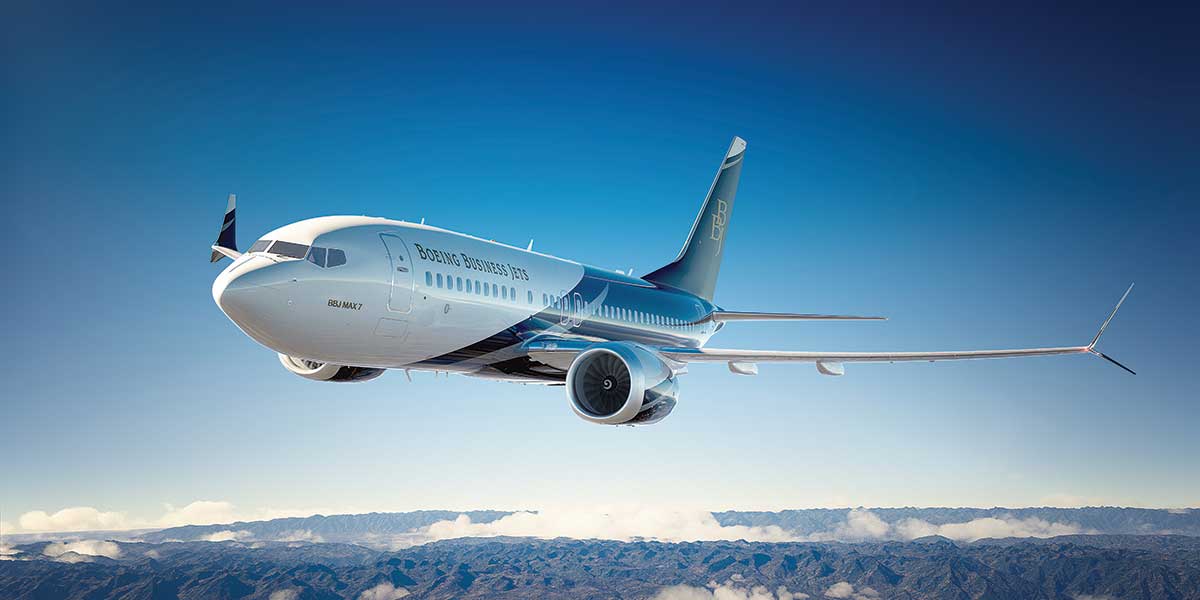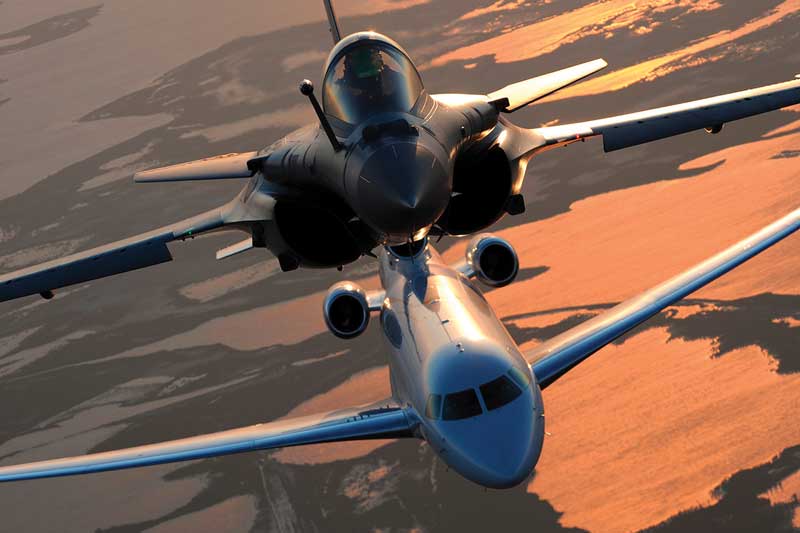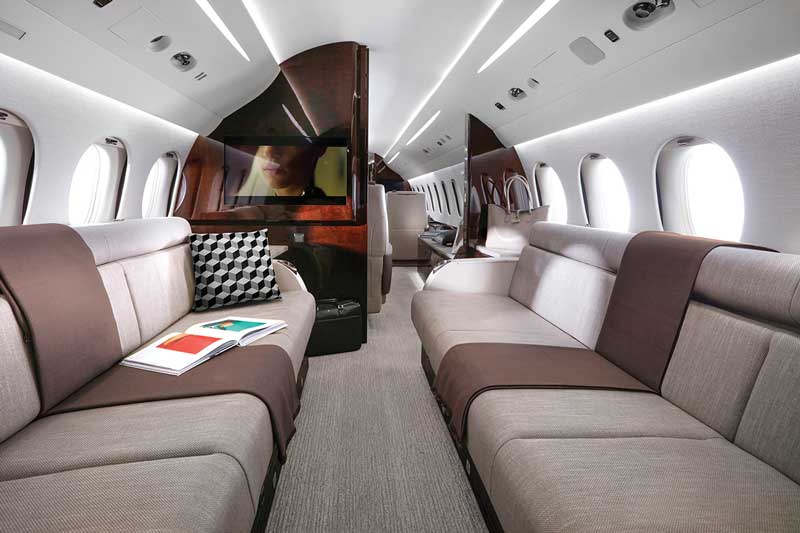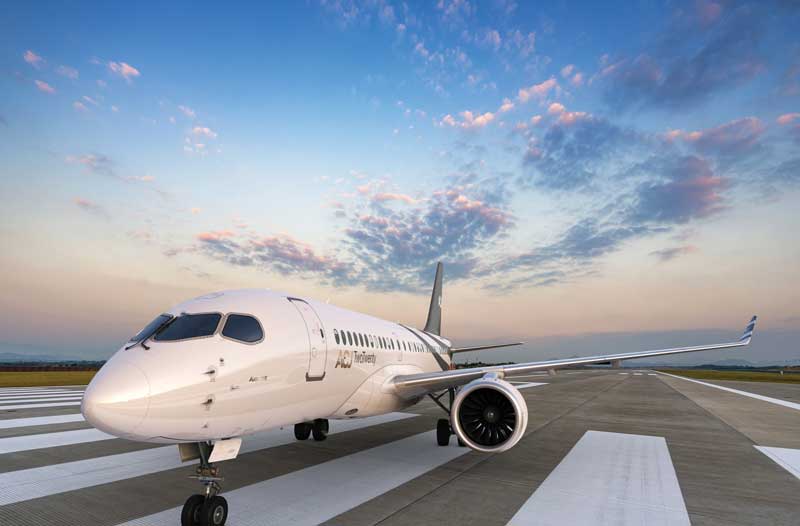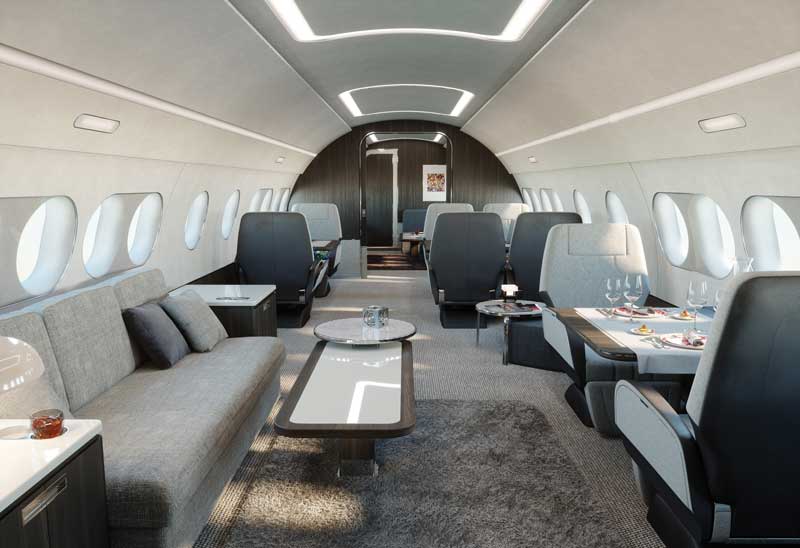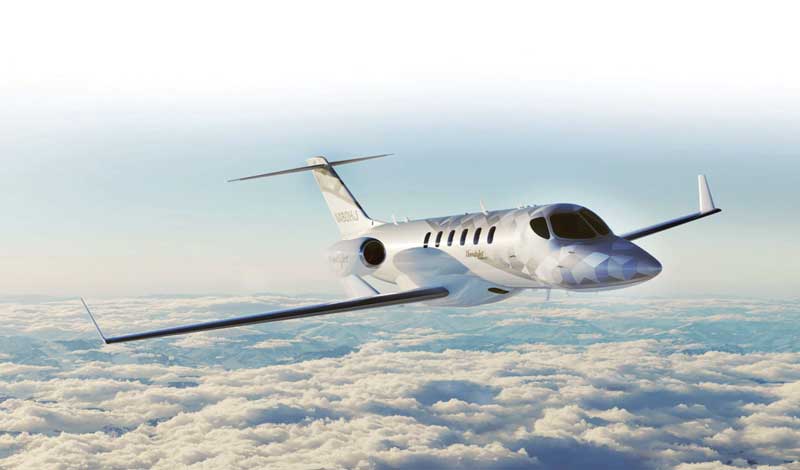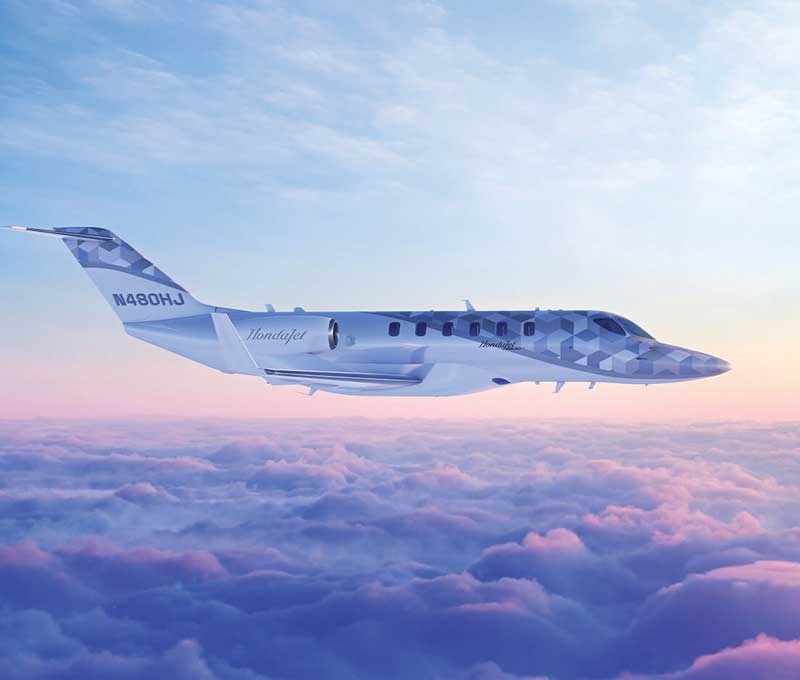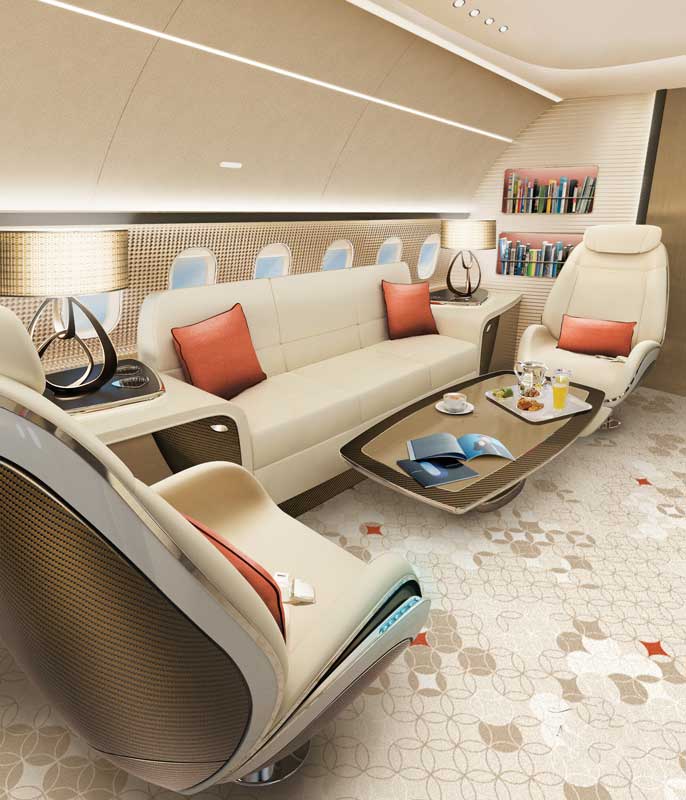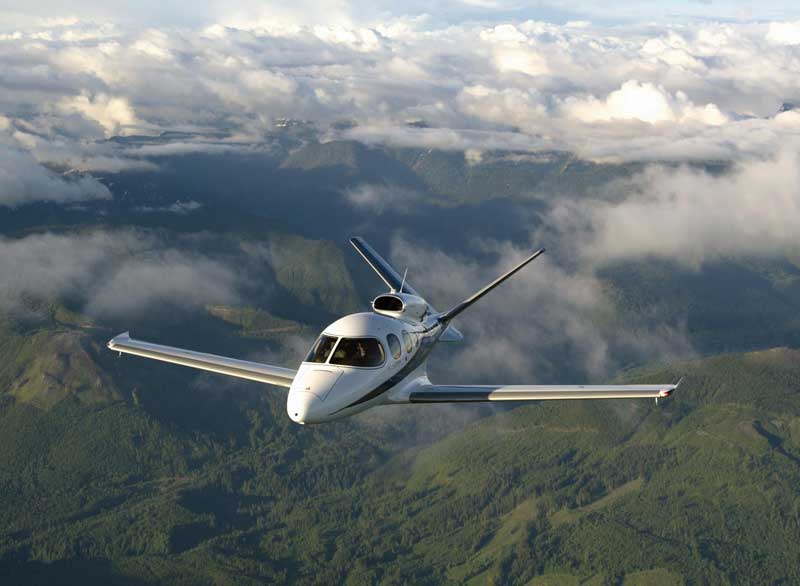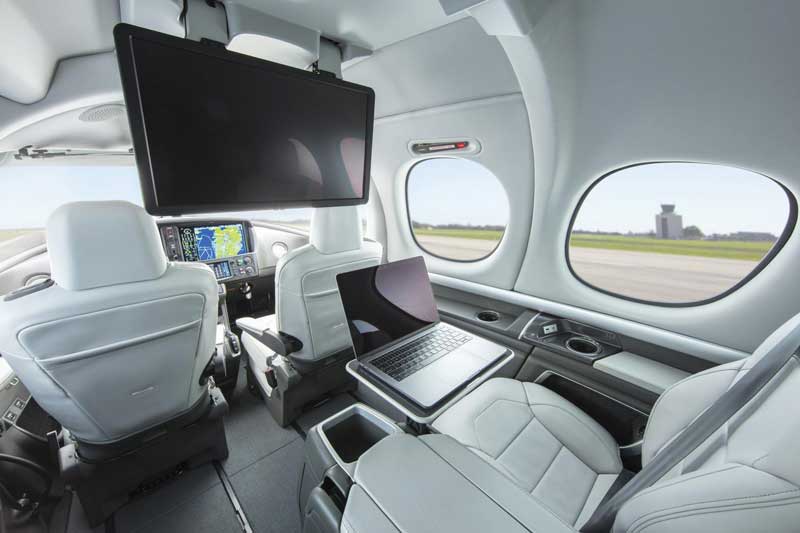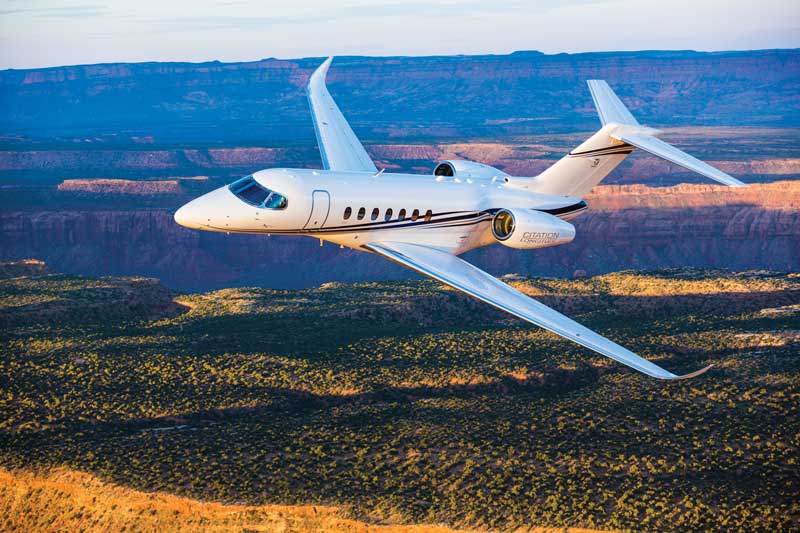Business aviation has become the new business productivity tool – in addition to healthcare rea-sons – in a quest to shorten distances and times.
A presentation of the latest models
The Fortune Business Insights report, Business Jet Market, 2021-2028, estimates projects that the private aviation market will grow from $25 billion in 2021 to $37 billion by 2028, at a growth rate of 5.22% over the forecast period.
The National Business Aircraft Association (NBAA) reports that annual U.S. business aviation revenues are approximately $5 trillion, coming from the 11,000 companies associated with them, which employ more than 19 million people around the world.
Faced with this increase, business jet manufacturers have segmented the market into several categories based on passenger capacity, range, and aircraft size: light jets (6-8 occupants), mid-size jets (7-9), super-midsize jets (8-12), heavy jets (9-16), ultra-long-range jets (12-19) and executive airliners, also known as bizliners (8-48).
Each year, aircraft builders launch new models, with a focus on longer ranges and avoiding environmental damage through sustainable aviation fuels (SAF). Here are some of the most recent jets.
Falcon 8X
From France comes the redesigned Falcon 8X, a long-cabin aircraft equipped with the digital flight control system (DFCS) of Dassault's Rafale fighter jets. The equipment monitors the flight path, constantly informing the pilot of the flight status.
The cabin, 42 ft 8 long and 6 ft 1 high, is one of the most versatile in the industry, with multiple configuration options, which can include a galley and a cabin with en-suite shower. Powered by three Pratt & Whitney PW307D engines, it achieves a range of 6,450 nm for intercontinental tours.
On board, it offers new acoustics, the quietest on the market, with average noise levels below 50 dB, equivalent to a living room, thanks to careful acoustic mapping and the application of insulation assemblies and sound reduction materials.
To enhance the passenger experience, it has additional areas for luggage storage and easy charging of personal devices. It also has novel features, such as a crew rest area.
The Innovative Cabin System (ICS) simplifies control of cabin management and entertainment functions; being Bluetooth compatible, it allows travelers to enjoy their music through the aircraft's speakers or wireless headphones. Once connected, the ICS application identifies the occupant's seat location and proposes environmental settings (temperature, lighting, and window shade adjustments).
|
Dimensions |
|
Length 80 ft |
|
Height 26 ft 1 in |
|
Wingspan 86 ft 3 in |
|
Cabin interior |
|
Length 42 ft 8 in |
|
Height 6 ft 1 in |
|
Width 7 ft 6 in |
|
Passengers 8 |
|
Performance |
|
Engines Pratt & Whitney PW307D |
|
Maximum operating altitude 51,000 ft |
|
Maximum cruise speed 370 ktas |
|
Maximum range 6,450 nm |
Cessna Citation M2 Gen2 y XLS Gen2
Expanding its range of business jets, U.S.-based Textron Aviation will soon be flying two new models: the Cessna Citation M2 Gen2 and the Cessna Citation XLS Gen2. Interior mock-ups of both aircraft were unveiled at the National Business Aviation Association Airshow (NBAA BACE).
The latest innovations of the Citation M2 platform reinforce the jet's focus on pilot and passenger comfort as well as productivity. Now with the M2 Gen2, it delivers the premium cabin experience, ambient accent lighting and in-flight storage access.
Upon approaching the Citation XLS Gen2, travelers and pilots will notice the new lighted stairway and an entry curtain to protect them from inclement weather.
In addition to these contemporary design elements, the XLS Gen2 features a state-of-the-art wireless cabin management system, including a touchscreen monitor, wireless charging, USB ports at each seat and Bongiovi immersive speakers. Deliveries are expected to begin in late Q1 2022 for the M2 Gen2, and Q2 2022 will fly the first XLS Gen2s.
Cessna Citation M2 Gen2
|
Dimensions |
|
Length 42 ft 7 in |
|
Height 13 ft 11 in |
|
Wingspan 47 ft 3 in |
|
Cabin interior |
|
Length 11 ft 0 in |
|
Height 4 ft 5 in |
|
Width 4 ft 5 in |
|
Passengers 7 |
|
Performance |
|
Engines Williams International FJ44-1AP-21 |
|
Maximum operating altitude 41,000 ft |
|
Maximum cruise speed 404 ktas |
|
Maximum range 1,550 nm |
Cessna Citation XLSGen2
|
Dimensions |
|
Length 52 ft 6 in |
|
Height 17 ft 2 in |
|
Wingspan 56 ft 4 in |
|
Cabin interior |
|
Length 18 ft 6 in |
|
Height 5 ft 5 in |
|
Width 5 ft 2 in |
|
Passengers 12 |
|
Performance |
|
Engines Pratt & Whitney Canada PWC545C Altitud máxima de operación 13,716 m |
|
Maximum operating altitude 45,000 ft |
|
Maximum cruise speed 441 ktas |
|
Maximum range 2,100 nm |
Embraer Phenom 300E
The Brazilian company Embraer launched its light jets in 2005 to surprise the market, and that included a cockpit and passenger cabin with details previously only seen on larger and more expensive aircraft.
The first model was the Phenom 300, recently completely revamped and introduced as the Phenom 300E. Becoming the best-selling light jet for nine consecutive years, it is the fastest single-pilot production aircraft with the longest range, capable of reaching a top speed of 464 ktas.
On board, travelers will enjoy the innovative Oval Lite cabin, with generous head and legroom and comfortable leather seats with folding worktables. Lufthansa Technik's HD program, an advanced control system, offers integration of all portable devices and wireless audio/video streaming on board. Of the various interior design options, the award-winning Bossa Nova in carbon fiber color and piano black finishes stands out.
With a range of 2,010 nm, it is the first and only business jet equipped with a Runway Overrun Alert and Alarm System (ROAAS), which sends the pilot a warning alert if the jet's approach to the runway is too steep or descends at excessive speed.
In addition, the pilot is supported by state-of-the-art Prodigy Touch avionics and a superior technology panel, which create an instinctive interface with the aircraft. Its Pratt & Whitney Canada PW535E1 engines reduce polluting emissions, as part of Embraer's program to reduce carbon emissions.
|
Dimensions |
|
Length 15.6 m |
|
Height 5.1 m |
|
Envergadura 15.9 m |
|
Cabin interior |
|
Length 5.23 m |
|
Height 1.50 m |
|
Ancho 1.55 m |
|
Passengers 6-10 |
|
Performance |
|
Engines Pratt & Whitney Canada PW535E1 |
|
Maximum operating altitude 45,000 ft |
|
Maximum cruise speed 464 ktas |
|
Maximum range 3,722 km |
Challenger 3500
In the development of the new Challenger 3500 business jet, special emphasis was placed on a commitment to sustainability, making it the first super mid-size jet with an Environmental Product Declaration, where it reports, quantifies, and provides transparency on its life-cycle environmental impact.
Unveiled by Canadian manufacturer Bombardier at the National Business Aviation Association Airshow (NBAA BASE 2021), it will enter service in mid-2022 as the initial fully carbon-neutral business jet. The interiors are made from recycled materials and natural fibers, with alternative wood options.
It features a redesigned cabin and that includes Nuage seats, a unique zero-gravity seating position technology, the most outstanding seating innovation of the past three decades. Its unique acoustic insulation makes it an ideal place to work or rest, combined with the flat floor that allows for safe and unrestricted transit.
Another feature that enhances passenger productivity (up to ten people on board, plus crew) is the first voice-controlled cabin interior, an exclusive Bombardier development; other devices include 24" 4K screens and wireless chargers for travelers' phone equipment. Since its launch, the Challenger 3500 has been very well received; the 20 firm orders for the aircraft are proof of this.
|
Dimensions |
|
Length 20.9 |
|
Height 20 ft 0 in |
|
Wingspan 69 ft 0 in |
|
Cabin interior |
|
Length 25 ft 2 in |
|
Height 6 ft 8 in |
|
Width 7 ft 2 in |
|
Passengers 10 |
|
Performance |
|
Engines Honeywell HTF7350 |
|
Maximum operating altitude 45,000 ft |
|
Maximum cruise speed 547 ktas |
|
Maximum range 6,297 km |
ACJ TwoTwenty
As 2022 began, the first ACJ TwoTwenty rolled out of the Airbus Corporate Jet (ACJ) division's hangars to complete test flights before being delivered to the customer. The aircraft can stay aloft for up to 12 hours, with a spacious cabin measuring 78 ft length and 6 ft 8 floor-to-ceiling.
It has six spacious VIP areas, with more than 100 possible configurations, with double doors that offer independence between areas, a table for eight people, electrochromic windows, which eliminate the blinds when darkened via remote control, a luxurious galley and a suite with king-size bed and private bathroom with shower.
Connectivity to the shore office allows online videoconferencing or live streaming from a 55-inch 4K screen or anywhere on board, all controlled by a tablet. Communication will never be lost due to lack of power to personal equipment, as each seat has USB ports and inductive chargers located in the cabinets.
The interior design includes LED ambient lighting and for comfortable communication, advanced soundproofing materials were installed, with a noise margin of 18 dB (like that produced in a library); integrated temperature control and humidification systems. With the constant renewal of cabin air every three minutes, travelers can rest assured.
Any destination in the world is feasible with the ACJ TwoTwenty, thanks to its intercontinental range of more than 5,000 nm, powered by the latest generation PW1500G Series engines, with nitrogen oxides (NOx) emissions 45% below standards and 50% less pollutant emissions per square meter compared to ultra-long-range jets.
|
Dimensions |
|
Length 114 ft 9 in |
|
Height 37 ft 8 in |
|
Wingspan 115 ft 1 in |
|
Cabin interior |
|
Length 78 ft |
|
Height 6 ft 8 in |
|
Width 10 ft 8 in |
|
Passengers 8-12 |
|
Performance |
|
Engines PW1500 G series |
|
Maximum operating altitude 41,000 ft |
|
Maximum cruise speed 527 ktas |
|
Maximum range 10,463 km |
HondaJet 2600
The HondaJet 2600, the first long-range light jet, will feature aeronautical advances from Japan's Honda Aircraft Company, including Over The Wing Engine Mount (OTWEM) configuration, Natural Laminar Flow (NLF) technology in the wings and fuselage nose, as well as carbon composite fuselage.
OTWEM involves the installation of the engine mount over the wings, which improves aerodynamics and fuel consumption, with reduced onboard noise. The HondaJet 2600 was launched at the National Business Aviation Association Airshow (NBAA BACE).
The cabin will be suitable for long-haul travel, carrying up to 11 passengers, with the most comfortable feel at 6,364 ft at a maximum operating altitude of 47,000 ft, thanks to the unique pressurization system in its class. Through the refinement of these technologies, the HondaJet 2600 could become the world's first light jet capable of non-stop transcontinental flights in the United States, by offering a range of 2,625 nm and a cruising speed of 450 ktas.
Another innovation is to be the first pilot-operated jet, with an advanced cabin that will incorporate innovative technologies such as electrification and automated systems, including throttle and autobraking, among other advances. In terms of fuel consumption, it will drastically reduce carbon emissions by up to 20%, compared to existing light jets, and will be 40% more fuel efficient than a medium jet.
|
Dimensions |
|
Length 57.62 ft in |
|
Height 15 ft 8 in |
|
Wingspan 17 ft 9 in |
|
Cabin interior |
|
Length 25 ft 4 in |
|
Height 5 ft 2 in |
|
Width 5 ft 1 in |
|
Passengers 11 |
|
Performance |
|
TBA |
|
Maximum operating altitude 47,000 ft |
|
Maximum cruise speed 450 ktas |
|
Maximum range 4,861 km |
BBJ MAX 7
Derived from the Boeing 737, the U.S.-based The Boeing Company designed and created the BBJ MAX 7, a Boeing Business Jet (BBJ) designed for private travel, offering a wide range of amenities.
The customer has all the facilities to create the jet according to his tastes and preferences. The spacious interiors – 85 ft 8 in length by 6 ft 9 high – allow the definition of several areas, including a bedroom with shower, dining room and luxury galley, as well as work areas.
On board, the BBJ MAX 7 offers the same cross-section as the original BBJ, where passengers can move around with ease. Once settled in the seat, each traveler has an area to work, with excellent internet connection and USB ports.
The BBJ MAX 7 has a lower cabin altitude feel than other jets. Inside, altitude never exceeds 6,496 ft, even at maximum cruising altitude (41,010 ft). On a long-range mission, the average altitude experienced will be 5,577 ft.
In terms of technology, the BBJ MAX 7 was the first model equipped with winglets – a Boeing development dating back to 1998 – a fin placed on the wingtips, with the aim of saving fuel. Boeing recently upgraded it with the MAX Advanced Technology winglet, which uses natural laminar flow to reduce air resistance during flight while increasing effective wingspan.
A member of the BBJ MAX family, the MAX 7 was fitted with the new CFM LEAP-1P engines, which combine the efficiency of the Boeing 787 with the high cycle of the Boeing 737; equipped with an optimized core and a fan 7.8 in larger than that of the current Boeing 737, the BBJ MAX 7 extends its range to 7,000 nm, an advantage over competing bizliners.
|
Dimensions |
|
Length 116 ft 8 in |
|
Height 40 ft 4 in |
|
Wingspan 117 ft 10 in |
|
Cabin interior |
|
Length 85 ft 8 in |
|
Height 6 ft 9 in |
|
Width 11 ft 7 in |
|
Passengers 8 |
|
Performance |
|
Engines CFM LEAP-1P |
|
Maximum operating altitude 41,000 ft |
|
Maximum cruise speed 470 ktas |
|
Maximum range 12,964 km |
Gulfstream G700
Gulfstream Aerospace Corporation has several G700 models in the air, the company's largest jet, which will begin delivery in the second half of 2022, with a spacious and innovative interior, and a lower altitude feel on board.
Passengers will have the effect of being 2,916 ft above sea level, when the jet is at an altitude of 41,000 ft. The onboard experience includes 100% fresh air – not recycled – low noise levels, the industry's widest windows, a new high-definition circadian lighting system and award-winning ergonomic seats.
The owner will have five configuration options, with a galley, crew space, entertainment and conference area, dining area and a suite with bed and shower.
The cockpit is equipped with the Symmetry Flight Deck platform, featuring tactile and intuitive Phase-of-Flight avionics, which reduces the pilot's workload. With Enhanced Flight Vision System (EFVS) technology, with two front displays, it allows easier access to airports through the Predictive Landing Performance System.
One of the six G700s on test at the Gulfstream Flight Test Center set a speed record (499 ktas) linking Doha, Qatar, and Paris, France. Another G700 milestone occurred on the mission between Georgia, on the east coast of the United States, and Doha, flying on a Sustainable Aviation Fuel (SAF) blend, which is part of the brand's commitment to reduce the carbon footprint of its models. Gulfstream was the first commercial aviation manufacturer to sign the World Economic Forum's Clean Skies for Tomorrow 2030 Declaration.
|
Dimensions |
|
Length109 ft 10 in |
|
Height 25 ft 5 in |
|
Wingspan 103 ft |
|
Cabin interior |
|
Length 63 ft 8 in |
|
Height 6 ft 3 in |
|
Width 8 ft 3 in |
|
Passengers 13-19 |
|
Performance |
|
Engines Rolls-Royce Pearl 700 |
|
Maximum operating altitude 51,000 ft |
|
Maximum cruise speed 499 ktas |
|
Maximum range 13,890 km |
Cirrus G2+ Vision Jet
With its distinctive and aerodynamic "V" tail, the Cirrus G2+ Vision Jet is a single-engine light jet designed to be piloted by its owner, accompanied by four people, with space to work in flight by deploying from the central console two worktables, and through the Gogo InFlight Wi-Fi program to keep in touch with ground personnel via a 22" LED LCD screen connected to electronic devices via Bluetooth.
For travel comfort, the seats are covered in premium leather and are modular, allowing 28 possible configurations in a pressurized cabin with large windows, directional lighting, and climate control.
In terms of safety, the G2+ Vision Jet offers the exclusive Cirrus Airframe Parachute System (CAPS) and Safe Return automatic emergency landing. For these safety features, the jet won the Robert J. Collier Award, given annually by the Aeronautics Association of America (NAA).
CAPS is a parachute that is manually activated from inside the jet in the event of an in-flight failure, while Safe Return can automatically land the jet in an emergency at the touch of a button. Safe Return calculates the landing route and searches for the nearest airport, including the runway, and sends an alarm signal to the emergency services at the selected airport.
Powered by a Williams FJ33-5A engine, it has a range of 1,275 nm, at a top speed of 311 ktas. In the cockpit, Garmin's Cirrus Perspective Touch+ system integrates the sophisticated Vision Jet into an intuitive interface, allowing the aircraft to be manned by a pilot without heavy workloads.
|
Dimensions |
|
Length 30 ft 7 in |
|
Height 10 ft 9 in |
|
Wingspan 38 ft 7 in |
|
Cabin interior |
|
Length 7 ft 1 in |
|
Height 4 ft 1 in |
|
Width 5 ft 1in |
|
Passengers 5-7 |
|
Performance |
|
Engines Williams International FJ33-5A |
|
Maximum operating altitude 31,000 ft |
|
Maximum cruise speed 311 ktas |
|
Maximum range 2,361 km |
Cessna Citation Longitude
Created to become one of the most effective corporate assets, the Cessna Citation Longitude offers transatlantic range, advanced engineering, and the lowest operating costs of any super-midsize jet.
Conceived as an extension of the office, the manufacturers spent time providing absolute soundproofing for business meetings. It has a large, flat-floored, 6-foot-high cabin with comfortable workspaces.
The technology allows video and music, window curtains, as well as temperature and lighting, to be controlled through a personal device. The distribution of the interior can be individualized, and that includes the installation of a sofa and worktables; another facility is to have constantly purified air, with the option of three filtration systems.
Its pair of Honeywell engines produce a displacement of 3,500 nm, ideal for traveling anywhere on the planet with great fuel efficiency. In the cockpit, the Garmin G5000 avionics package features autopilot and automatic throttles with emergency descent mode, along with four touchscreen controllers within easy reach.
During a trip, LinxUs, an integrated diagnostic tool, monitors the aircraft, providing real-time reports, detecting any possible anomalies. The benefit of this is that every 800 flight hours, or 18 months, the aircraft must be taken in for maintenance, one of the lowest averages for a super-midsize jet.
|
Dimensions |
|
Length 73 ft 2 in |
|
Height 19 ft 5 in |
|
Wingspan 68 ft 11 in |
|
Cabin interior |
|
Length 25 ft 2 in |
|
Height 5 ft 9 in |
|
Width 6 ft 4 in |
|
Passengers 4-12 |
|
Performance |
|
Engines Honeywell HTF7700L |
|
Maximum operating altitude 45,000 ft |
|
Maximum cruise speed 483 ktas |
|
Maximum range 6,482 km |
Text: Ricardo Villanueva ± Photo: Courtesy of brands

